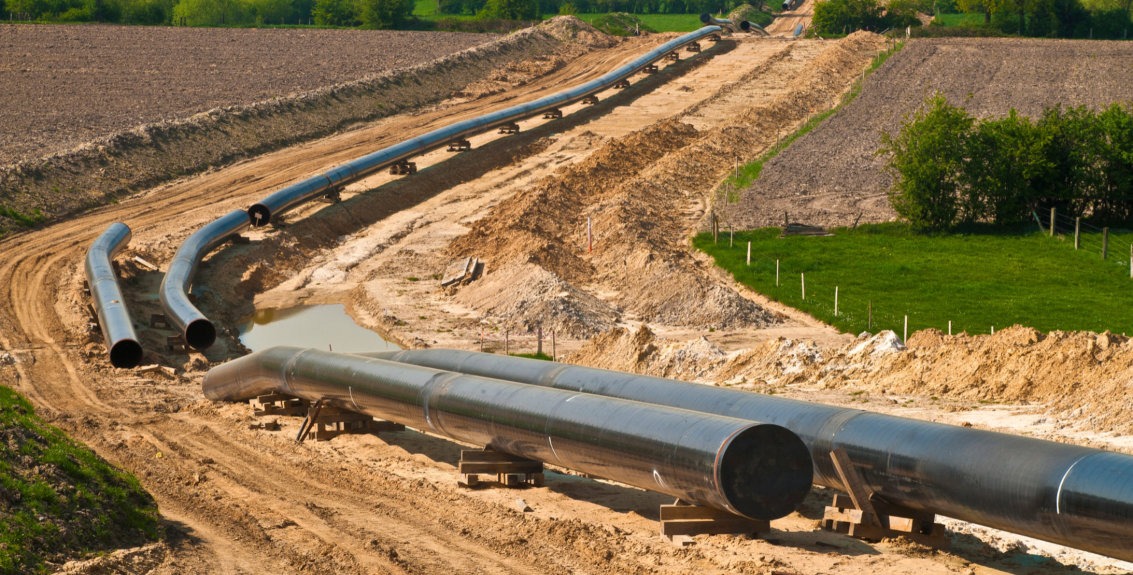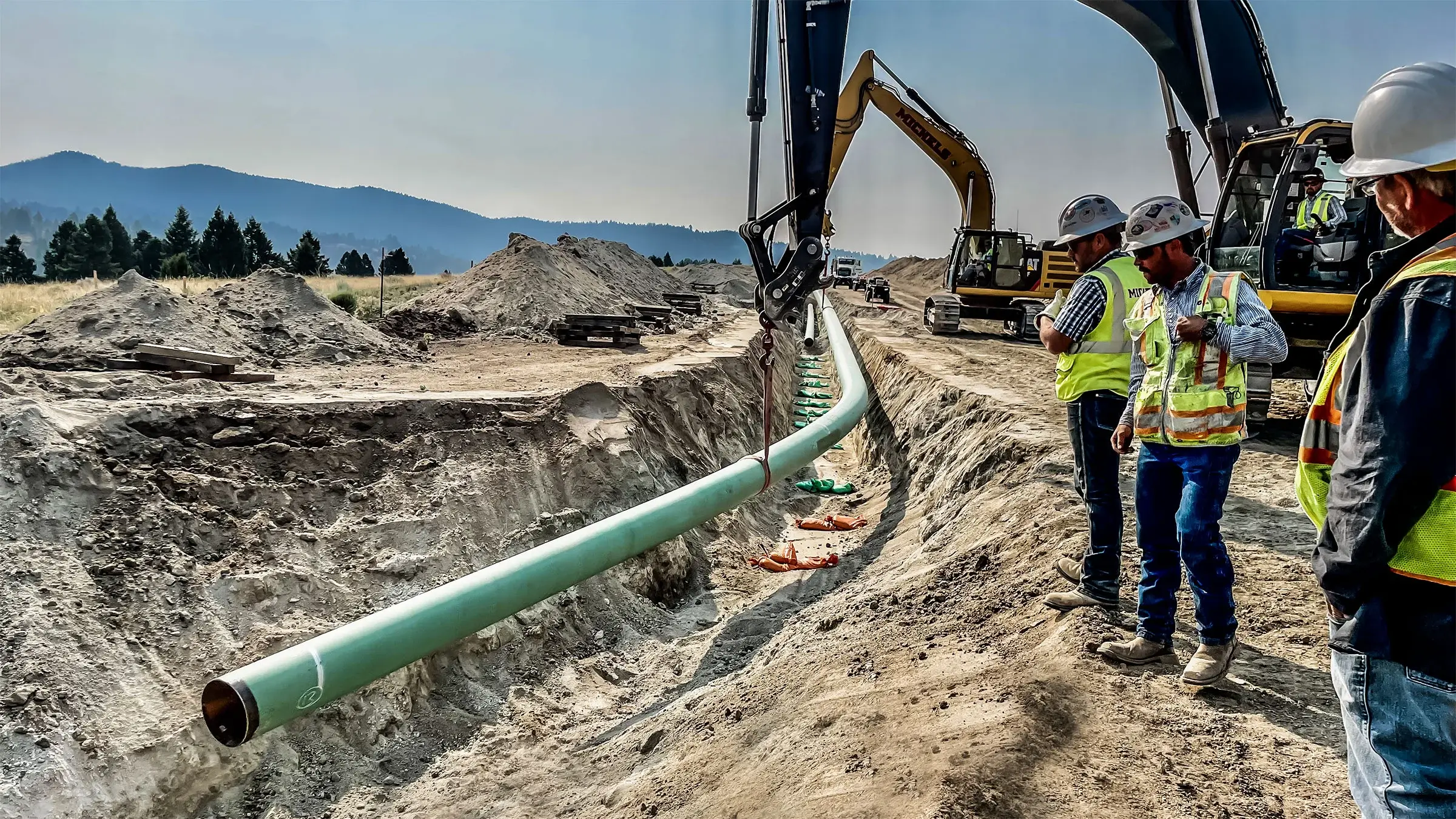Stay Up-To-Date With Local Building Codes Through Creek Pipe Company
Wiki Article
The Importance of Pipeline Construction: Discovering the Providers Supplied in the Industry
Pipeline construction is a crucial component of contemporary framework. It assists in the transport of vital sources like oil, gas, and water. The market encompasses various services, including preparation, website preparation, and installment. Each stage requires accuracy and adherence to safety criteria. As neighborhoods depend upon these systems for their source of incomes, understanding the details of pipeline construction discloses its value and prospective difficulties. What factors influence the success of these jobs?Overview of Pipeline Construction Providers
Pipeline construction services incorporate an array of specialized activities designed to facilitate the installation of pipelines for delivering various substances, consisting of oil, gas, and water. These solutions typically include site preparation, excavation, setup of pipeline sectors, and backfilling. Skilled labor and innovative tools are basic for assuring each phase is implemented with accuracy and safety.Safety procedures are paramount, as these tasks usually entail collaborating with dangerous materials and in difficult atmospheres. Quality assurance measures establish that the pipelines satisfy industry standards and guidelines. Additionally, the services may entail trenchless innovation, which minimizes surface area disruption.Environmental factors to consider play a significant role in pipe construction, requiring evaluations and reductions to secure bordering ecosystems. Overall, pipeline construction solutions are necessary for developing the facilities required for energy and water circulation, sustaining both economic growth and social demands.Planning and Style in Pipeline Projects
Effective planning and style are crucial components of successful pipeline projects, making certain that all aspects are meticulously resolved prior to construction starts. This stage includes comprehensive feasibility research studies that examine the technical, financial, and environmental variables influencing the project. Engineers and developers work together to create comprehensive plans that detail the pipe course, products, and construction approaches, lining up with regulatory needs and market standards.Advanced software and modeling methods are usually used to replicate various circumstances, optimizing the layout for efficiency and safety and security. Environmental influence analyses are conducted to minimize prospective damage to ecological communities and communities, mirroring a dedication to lasting methods. Additionally, stakeholder involvement is vital, fostering interaction and attending to issues from affected parties. Eventually, reliable preparation and style established the foundation for a pipe task, reducing threats and guaranteeing a streamlined construction process, ultimately contributing to the overall success of the procedure.Site Preparation and Excavation
Comprehensive website preparation and excavation are essential action in the pipe construction process. This phase involves a comprehensive assessment of the land where the pipe will certainly be set up. Task groups conduct studies to identify dirt kinds, topography, and existing utility lines to guarantee a risk-free and efficient excavation. Appropriate site prep work minimizes ecological impact and assists in smoother construction operations.Excavation adheres to, where hefty machinery is used to get rid of soil and rock, producing a trench that satisfies the defined deepness and width for the pipeline. This process needs to stick to security guidelines and environmental standards to stop damage to surrounding ecosystems.Additionally, disintegration control actions are executed to stabilize the website throughout and after excavation. Reliable website prep work and excavation add greatly to the general success of pipe projects, laying a solid foundation for the subsequent stages of construction.Pipeline Installation Strategies
Pipeline installation methods are necessary for the successful execution of facilities tasks. Two popular methods include trenchless modern technology, which minimizes surface area disturbance, and the open-cut excavation procedure, recognized for its simple technique. Each technique uses unique advantages and factors to consider depending on job needs and environmental factors.Trenchless Modern Technology Techniques
While conventional methods of pipeline setup commonly entail substantial excavation, trenchless modern technology approaches offer a much more reliable and eco-friendly option. These innovative techniques, such as horizontal directional exploration and pipeline bursting, decrease surface disruption by enabling the setup of pipes without considerable excavating. This not just reduces the environmental effect yet also greatly reduces labor and reconstruction expenses. Trenchless approaches facilitate the setup of pipelines in metropolitan locations where typical excavation would be not practical or damaging to existing infrastructure. Furthermore, these strategies can suit various dirt kinds and problems, making them functional solutions for pipeline construction. Ultimately, trenchless modern technology represents a considerable advancement in the pipeline sector, promoting sustainability and functional effectiveness.
Open-Cut Excavation Process
Open-cut excavation stays a basic technique in pipeline installment, defined by the direct excavation of a trench to lay pipes. This approach involves removing soil and other products to develop a trench of adequate deepness and size, permitting the placement of pipelines at the needed quality. Open-cut excavation is frequently chosen for its cost-effectiveness and simplicity, especially in locations with secure soil conditions. It can interfere with surface area activities and needs cautious planning to manage website traffic and environmental influences. Security actions must be implemented to shield workers and close-by framework throughout the excavation procedure. On the whole, while open-cut excavation might not be suitable for all terrains, it stays a widely made use of strategy in pipeline construction.Testing and Top Quality Assurance
Examining and quality control are essential parts in pipeline construction, making sure that installments meet well-known security criteria and performance needs. Various examination methods and methods are employed to evaluate material quality and adherence to governing compliance. This methodical technique helps identify potential concerns before they rise, securing the stability of the pipe system.
Inspection Techniques and Techniques
Assessment techniques and methods are vital parts in guaranteeing the honesty and security of pipe construction. Numerous techniques, consisting of visual evaluations, ultrasonic testing, and radiographic examinations, are utilized to detect flaws and verify top quality. Visual evaluations enable for the recognition of surface anomalies, while ultrasonic testing utilizes acoustic waves to examine wall surface density and situate flaws inside. Radiographic evaluations include X-rays or gamma rays to create photos of the pipe's framework, exposing surprise concerns. In addition, stress testing is carried out to review the pipe's stability under operational problems. These approaches collectively add to a comprehensive understanding of the pipe's problem, enabling prompt maintenance decisions and guaranteeing compliance with sector standards. Reliable evaluation is vital for stopping failures and promoting lasting operational security.Security Requirements Conformity
Making sure conformity with security criteria is vital in pipeline construction, as it directly affects the project's overall top quality and dependability. Sticking to established laws and standards warranties that construction practices Creek Pipe reviews alleviate risks related to pipeline installation and procedure. Creek Pipe near me. Strenuous testing procedures, consisting of non-destructive screening and stress evaluations, are critical in validating that pipelines can hold up against the functional stress and anxieties they will certainly come across. Quality assurance steps are also crucial, as they establish a structure for regular tracking and analysis throughout the construction procedure. By focusing on safety and security criteria compliance, business not only secure workers and the environment however also improve the honesty of the pipe, eventually leading to lasting operational success and public count on the infrastructureMaterial Quality Assessment
Material quality assessment plays a substantial function in the total honesty of pipe construction. This procedure includes extensive testing and high quality guarantee actions to assure that products meet industry requirements and specifications. Different examinations, consisting of tensile strength, corrosion resistance, and weld honesty analyses, are conducted to identify any kind of potential weaknesses. An extensive examination not just assures the performance of the pipeline however additionally improves safety and security and resilience over its lifespan. Furthermore, applying quality assurance protocols assists mitigate risks linked with product failings, which can cause pricey repair work and ecological risks. By prioritizing worldly high quality evaluation, companies can guarantee conformity with regulatory needs while promoting confidence amongst stakeholders in the dependability of their pipe systems.Repair And Maintenance Services
Maintenance and repair service solutions play an essential function in the long life and performance of pipe systems. These solutions include normal examinations, repairing, and restorative actions to resolve wear and tear, leaks, and other problems that may emerge gradually. Skilled specialists utilize advanced innovations such as ultrasonic testing and wise pigging to monitor pipe stability, ensuring that any prospective problems are identified early.Additionally, upkeep programs commonly consist of set up safety nets developed to enhance system reliability and reduce the chance of unforeseen failings. Repair solutions may involve the replacement of broken sections, sealing leakages, or utilizing trenchless technology for marginal interruption.Environmental Compliance and Precaution
Pipeline systems not only need recurring repair and maintenance to function efficiently but additionally have to follow rigid ecological compliance and safety measures. These regulations are vital for reducing eco-friendly influence and making sure public security. Companies in the pipe construction sector apply complete ecological assessments prior to task initiation, recognizing potential threats to wildlife and ecosystems.Furthermore, adherence to safety and security protocols safeguards employees and bordering communities. This includes normal training on emergency situation response and spill avoidance techniques.To maintain conformity, markets use monitoring innovations to spot leaks and various other anomalies in real-time. Ecological monitoring plans are typically developed to detail actions for dealing with unpredicted issues throughout construction.Ultimately, strict adherence to ecological conformity and precaution not just satisfies lawful commitments however additionally promotes sustainable practices within the market, advertising a balance between framework advancement and environmental stewardship.Often Asked Concerns
What Job Opportunities Are Readily Available in Pipeline Construction?
Occupation opportunities in pipeline construction encompass roles such as task supervisors, designers, welders, and security examiners. These settings need diverse abilities, offering pathways for development in a vital field of facilities advancement and power circulation.

Exactly How Do Pipeline Projects Impact Local Communities?
Pipeline jobs significantly influence neighborhood communities by affecting economic development, offering task opportunities, and boosting infrastructure. They might also raise issues about environmental results, land usage, and prospective disruptions to neighborhood communication and all-natural environments.
What Modern technology Is Made Use Of in Modern Pipeline Construction?
Modern pipe construction makes use of innovative technologies such as GIS for mapping, drones for aerial surveys, and automated welding systems to boost performance, safety and security, and accuracy, ultimately helping with the effective transportation of sources throughout numerous surfaces. Creek Pipe pipeline construction.Just How Are Pipeline Construction Costs Approximated?
Pipeline construction costs are approximated with comprehensive evaluations of products, labor, equipment, and governing demands. Variables like surface, project size, and environmental considerations likewise significantly influence the total budget and financial planning for construction.What Are the Largest Difficulties in Pipeline Construction Projects?
The largest obstacles in pipe construction jobs consist of regulative conformity, environmental worries, logistical problems, protecting funding, and handling labor lacks. Each variable can considerably impact timelines and budget plans, making complex the general implementation of the job.Report this wiki page